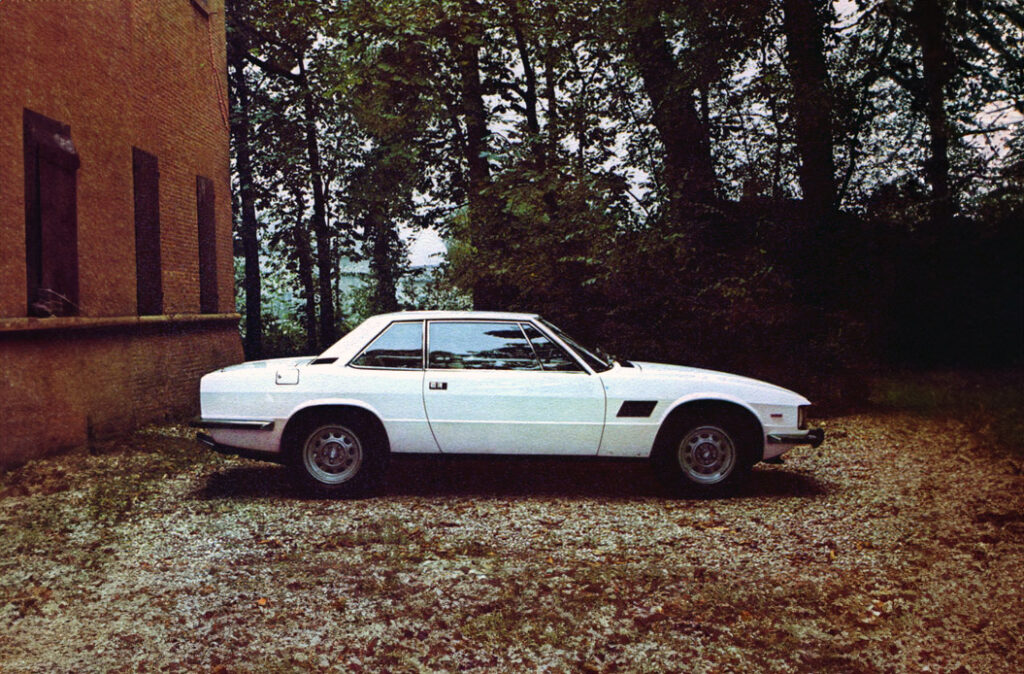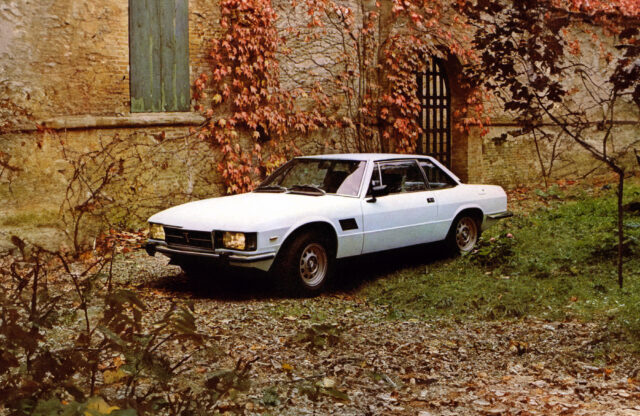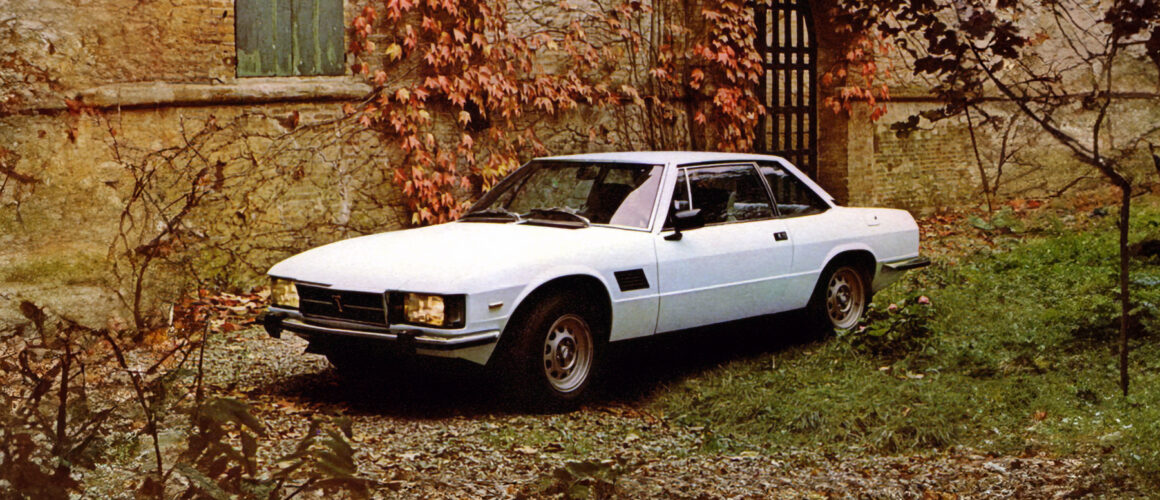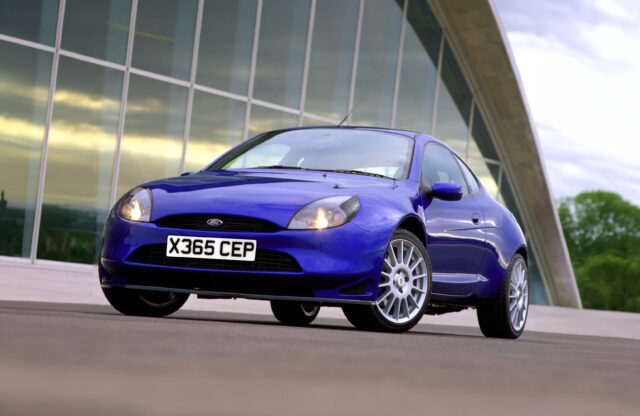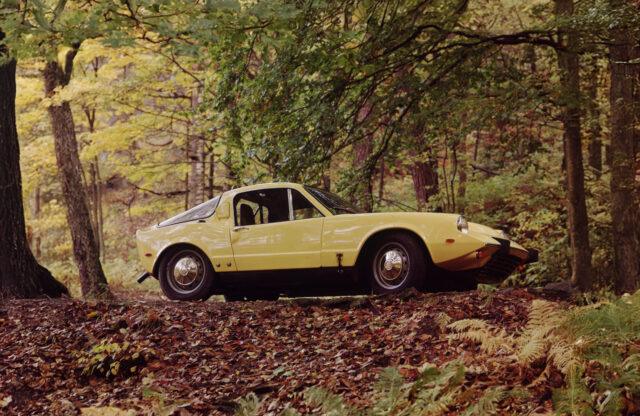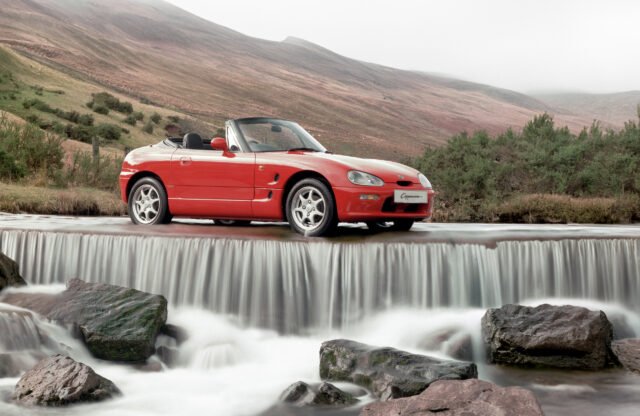With only 410 built during a remarkably long run from 1972 to 1989, the De Tomaso Longchamp was always a niche proposition. This often overlooked four-seater GT might have been the Pantera’s slightly more sensible sibling, and a slightly less pretty twin to the Maserati Kyalami, but it’s an effortlessly cool Italian exotic that remains a real connoisseur’s choice.
In effect, this was a coupé version of the four-door Deauville that was launched two years earlier, in 1970. It was underpinned by a shortened version of the same ladder-frame chassis – developed by Giampaolo Dallara – featuring independent double- wishbone suspension and in-board vented disc brakes. The body was styled by Tom Tjaarda at Ghia – it borrowed headlights from the Ford Granada – and it was propelled by a 330bhp 5.8-litre Ford ‘Cleveland’ V8 engine, also found in the Pantera. This was connected to the rear wheels via a three-speed Ford automatic gearbox, except in the 17 specified with a five-speed ZF manual. With a claimed top speed of 149mph, it was a genuinely fast grand tourer.
Arriving just before the height of the oil crisis was one issue, but this new De Tomaso also had plenty of tough competition from the likes of the Mercedes 450 SLC, Jensen Interceptor and Aston Martin DBS V8 – not to mention other Italian rivals from Ferrari and Lamborghini. The Longchamp was generally well- received but sales were understandably slow.
While the oil crisis hadn’t done any luxury car makers any favours, Citroën-owned Maserati was in particularly dire straits by 1975. As Citroën was itself
financially crippled, Maserati was sold to Alejandro de Tomaso in partnership with the Italian state-run GEPI. Soon after this, in 1976, Maserati launched the Kyalami, which looked suspiciously similar to the Longchamp. In fact it was based heavily on the Longchamp, with a lightly restyled body from Frua and a Maserati V8 engine under the bonnet. Production ran until 1980, with 200 built.
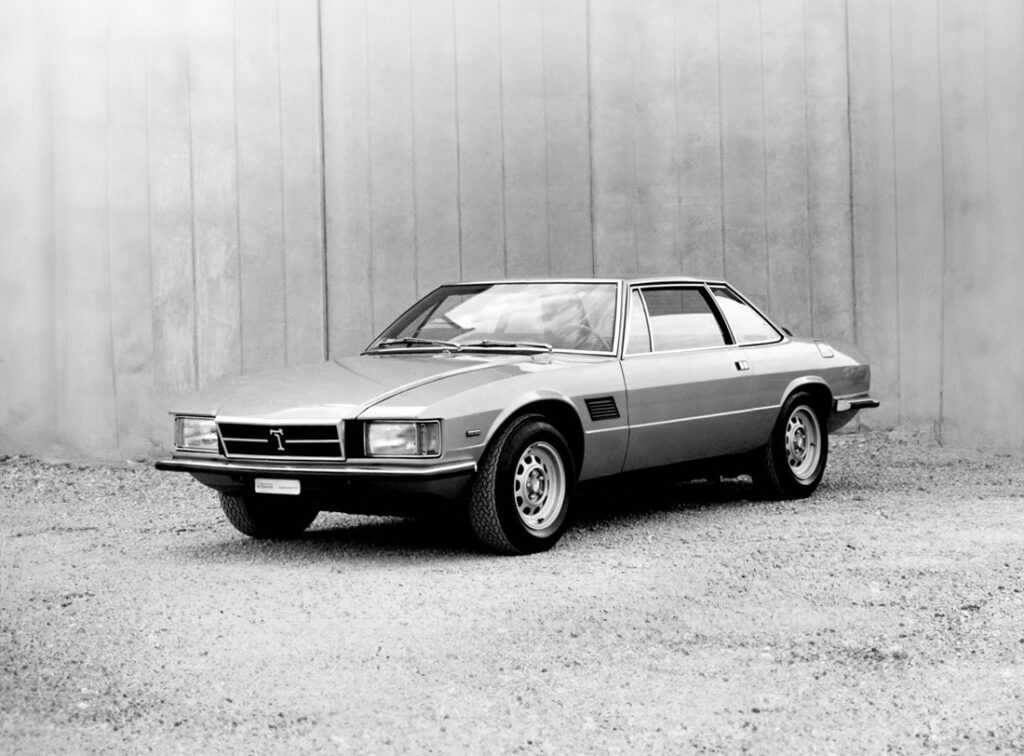
At around the same time as Maserati abandoned the Kyalami, De Tomaso gave the Longchamp a mild facelift, with new bumpers and wheels plus a new, pumped-up GTS/E variant. With Countach-style glassfibre wheelarch extensions and a set of gorgeous Campagnolo wheels, it really transformed the look of the car. To make the most of its new Pirelli P7 tyres, the suspension was firmed up, improving handling.
Convertible versions of the Longchamp were offered by Carrozzeria Pavesi, built in both standard and GTS/E form. Only 16 were manufactured from new, with a few earlier cars subsequently converted.
Ford of America had stopped building the Cleveland engine in 1974, yet De Tomaso was able to source units from Australia. Even so, production slowed considerably during the second half of that decade and, although build numbers are sketchy, it’s known that no cars were officially built in 1986 and it was produced in only single figures annually up to 1989. As a result, there is a limited choice on the market today, but buy carefully and you’ll have one of the finest ’70s coupés, and one that most people have never heard of.
De Tomaso Longchamp Common problems
• Because the Longchamp is steel-bodied, corrosion is an inevitability: Inspect all the external panels carefully and, if restored, check the quality of the repairs. As with any handbuilt car of this ilk, restoration costs can quickly spiral out of control, and lower values in the past mean that corners may have been cut.
• Engines are typically bombproof, as are the automatic ’boxes. ZF manuals can be pricey to rebuild.
What to pay?
The vast majority of the 410 cars built were Series 1 automatics, which range anywhere from £15,000 in need of a lot of work all the way up to around £60,000 for a very well-sorted car. A manual car could be worth significantly more.
Due to the rarity of Series 2 cars, they are generally more valuable, especially in GTS form, with the best upwards of £75,000. Most valuable are the Spyder models, with an original car valued at more than £100,000. A few were later converted by Pavesi, but these are less desirable.
